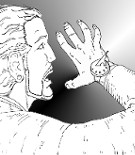Template:Are You Sure/April 13: Difference between revisions
From Gnomon Chronicles
No edit summary |
No edit summary |
||
| Line 1: | Line 1: | ||
• ... that '''[https://en.wikipedia.org/wiki/True_muonium true muonium]''' is a theoretically predicted exotic atom made up of an antimuon and a muon which has yet to be observed, but may have been generated in the collision of electron and positron beams? | • ... that '''[https://en.wikipedia.org/wiki/True_muonium true muonium]''' is a theoretically predicted exotic atom made up of an antimuon and a muon which has yet to be observed, but may have been generated in the collision of electron and positron beams? | ||
• ... that ''''' | • ... that '''''[https://en.wikipedia.org/wiki/Consequentia_mirabilis consequentia mirabilis]''''' was a pattern of argument popular in 17th century Europe that first appeared in a fragment of [[Aristotle (nonfiction)|Aristotle]]'s ''Protrepticus'': "If we ought to philosophise, then we ought to philosophise; and if we ought not to philosophise, then we ought to philosophise (i.e. in order to justify this view); in any case, therefore, we ought to philosophise."? | ||
Revision as of 20:23, 12 April 2020
• ... that true muonium is a theoretically predicted exotic atom made up of an antimuon and a muon which has yet to be observed, but may have been generated in the collision of electron and positron beams?
• ... that consequentia mirabilis was a pattern of argument popular in 17th century Europe that first appeared in a fragment of Aristotle's Protrepticus: "If we ought to philosophise, then we ought to philosophise; and if we ought not to philosophise, then we ought to philosophise (i.e. in order to justify this view); in any case, therefore, we ought to philosophise."?
